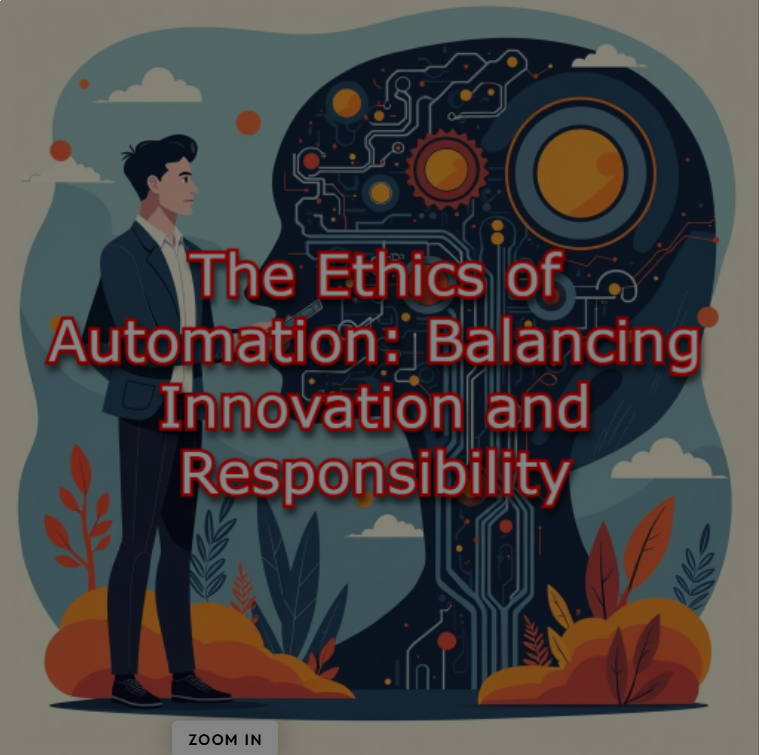The Ethics of Automation: Balancing Innovation and Responsibility

The automation revolution of 2025 presents a dual-edged reality where transformative technological capabilities coexist with profound ethical dilemmas. While automation threatens to displace 85 million jobs globally, organizations are simultaneously discovering that ethical AI practices provide the guardrails necessary for sustainable innovation. Consequently, the challenge lies not in choosing between progress and responsibility, but in architecting systems that embody both.
The Regulatory Landscape Shifts Toward Accountability
Governments worldwide have begun implementing frameworks that demand ethical automation practices rather than merely encouraging them. Regulators now require AI systems to be fair and bias-free, especially in hiring and credit decisions, with non-compliance resulting in substantial fines and damaged public trust. Additionally, New York City mandates audits for AI systems used in hiring, requiring employers to demonstrate fair results across gender and racial groups.
UNESCO’s Global Standard: The UNESCO Recommendation on the Ethics of Artificial Intelligence establishes four core values: respect for human rights, living in peaceful societies, ensuring diversity and inclusiveness, and thriving environment. Furthermore, this framework interprets AI broadly as systems processing data to resemble intelligent behavior, creating future-proof policies that adapt to rapid technological change.
Real-World Consequences of Ethical Failures
The stakes of automation ethics extend far beyond theoretical concerns to measurable business and social impacts. Amazon’s AI recruiting tool penalized women candidates, with 60% of selections being male due to biased historical recruitment patterns that the algorithm learned and perpetuated. Moreover, the Dutch childcare benefits scandal demonstrates how algorithmic bias can devastate families, resulting in wrongful fraud accusations and over 1,000 children placed in foster care.
Healthcare Insurance Disparities: Aetna discovered its claim approval algorithms led to longer delays for lower-income patients, prompting the company to reweight data and implement additional oversight mechanisms. These examples illustrate how automation can accelerate discriminatory practices if ethical considerations aren’t embedded from the system’s inception.
Strategic Approaches to Ethical Automation
Bias Mitigation Through Design: Organizations are implementing comprehensive bias assessments throughout development cycles rather than treating ethics as an afterthought. Additionally, diverse development teams help identify potential harms from multiple perspectives while establishing ethics review boards with varied membership. Furthermore, only 47% of organizations currently test for bias in data, models, and human algorithm usage, indicating significant room for improvement.
Privacy-Preserving Innovation: Modern automation employs privacy-by-design approaches using techniques like differential privacy and federated learning that enable training on sensitive data while preserving individual privacy. These methods demonstrate how innovation can advance without compromising fundamental rights, creating win-win scenarios for technological progress and ethical responsibility.
Human-Centered Automation Design
The most successful automation implementations maintain meaningful human control while leveraging AI capabilities, avoiding both over-reliance and under-utilization of automated systems. Consequently, algorithmic impact assessments have become standard practice alongside human oversight requirements that ensure appropriate intervention capabilities. Moreover, organizations are implementing contest mechanisms that allow individuals to challenge automated decisions that significantly affect their lives.
Explainability Requirements: The shift toward “glass box” AI systems provides clear explanations for automated decisions, including visualization tools that reveal decision pathways and user-friendly explanations tailored to different stakeholders’ technical understanding. This transparency becomes especially critical in high-stakes applications involving healthcare, criminal justice, or financial services.
Economic and Social Responsibility
Job Displacement Strategies: While automation creates new opportunities requiring advanced digital and analytical skills, ethical organizations implement comprehensive transition strategies including retraining, reskilling, and fair support for displaced workers. Additionally, collaboration between technology developers, policymakers, and stakeholders helps create policies that balance innovation with social responsibility.
Community Impact Assessment: Organizations are recognizing that ethical considerations strongly connect with reputation and business sustainability, making proactive ethical management essential for long-term success. Furthermore, ignoring ethical implications can lead to public backlash, legal challenges, and reputational damage that undermines competitive advantages.
Implementation Framework for Ethical Automation
Governance Structures: Successful organizations embed ethics into their development processes through regular training and diverse team composition that identifies potential harms before deployment. Additionally, clear data governance frameworks specify collection practices, usage parameters, and deletion schedules that respect privacy while enabling innovation.
Continuous Monitoring: Risk-based regulatory frameworks like the EU AI Act apply stricter requirements to high-risk applications while allowing innovation in lower-risk scenarios. Moreover, mandatory impact assessments and regular third-party auditing ensure that ethical standards evolve alongside technological capabilities.
Industry Leadership and Competitive Advantage
Trust as a Differentiator: Companies demonstrating leadership in AI ethics gain distinct advantages through stronger customer loyalty, improved talent attraction, and reduced regulatory scrutiny. Additionally, these organizations build more valuable and reliable systems that deliver sustainable competitive advantages over competitors treating ethics as compliance checkboxes.
Future-Proofing Through Ethics: AI governance frameworks help businesses confidently push technological boundaries while staying within legal and ethical standards, providing safe spaces for creative exploration. This approach enables development of smarter, more innovative solutions whether in customer experience, healthcare personalization, or operational efficiency.
The Path Forward
The evidence overwhelmingly demonstrates that ethical automation represents not a constraint on innovation but rather a foundation for sustainable technological advancement. Organizations recognizing that innovation and ethical responsibility are two sides of the same coin position themselves for long-term success in an increasingly regulated and socially conscious marketplace.
The choice facing organizations in 2025 is clear: embrace ethical automation as a strategic imperative that enhances innovation, or risk being left behind by competitors who understand that responsible development creates more valuable, trustworthy, and ultimately successful technological solutions. As artificial intelligence becomes increasingly embedded in critical business processes, the organizations that thrive will be those that view ethics not as an obstacle to overcome, but as a competitive advantage to cultivate.